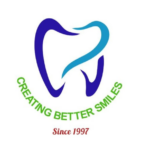Do’s & Dont’s After Tooth Extraction
1. TO CONTROL BLEEDING
- Bite firmly on the gauze for 45 minutes to an hour.
- Applying pressure over an extended period is the key.
- Don’t keep changing the gauze, and don’t chew on it. Just put it in place and close down, for the full 45 minutes to an hour.
- The blood clot that forms in the tooth’s empty socket is an important part of the healing process, so be careful not to do anything that will dislodge or disrupt it.
- Avoid vigorous rinsing or spitting. – These activities may dislodge the clot.
- Don’t disturb your extraction site. – Don’t touch or poke at it with your finger. Don’t explore it with your tongue.
- Don’t consume hot liquids and foods. – Hot items, especially liquids like soup, tea, and coffee, tend to dissolve blood clots.
- You should avoid smoking or using a straw (these activities create suction). Also, don’t blow your nose. And if you need to sneeze, sneeze with your mouth open. (See below for more details.)
- It’s best to avoid strenuous work or exercise.
2. SWELLING
It’s common and normal for some degree of swelling to occur after having a tooth pulled. The amount that ultimately forms is typically proportional to the extent of the surgery that has taken place. That means:
After very simple extractions you may notice very little, possibly none.
With more involved cases (longer, more difficult extractions or the removal of several teeth) you may notice a pronounced enlargement, possibly involving a large portion of your face.
Generally speaking, the amount of swelling that forms can be minimized via the application of ice packs on the outside of your face over the area where your surgery was performed, starting immediately upon the completion of your procedure.
3. AVOID SMOKING
People who smoke tend to experience a higher level of complications with extraction site healing. That means if you can avoid smoking for the first 24 hours (and preferably 48 hours and longer) after having your tooth pulled, it will be to your benefit.
4. AVOID BLOWING NOSE
That’s because doing so can create a pressure difference between your mouth (via the recesses of your extracted tooth’s socket) and your sinuses that might be great enough to disrupt what in some cases may be just a paper-thin layer of bone separating the two.
5. EATING
Take soft and cold diet for first 24 hrs.
Try chewing from the other side of the extraction site.
6. NUMBNESS
After your tooth has been pulled, some portion of your mouth will still be numb, possibly for some hours. Besides just the area immediately surrounding your extraction site, this will likely include some aspect of your lips, cheeks or tongue too.
This sensory loss can result in accidents. As examples …
You might unknowingly bite your lip or tongue while chewing, possibly even repeatedly.
You might not be able to test hot (temperature) foods and beverages adequately, which could result in burns.
